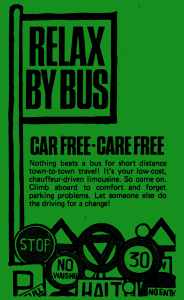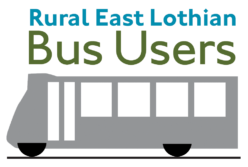 Gavin Booth gave some fascinating figures at the recent East Lothian Bus Forum, which compared and contrasted timetables today and under the old SMT, in the 70s.
Gavin Booth gave some fascinating figures at the recent East Lothian Bus Forum, which compared and contrasted timetables today and under the old SMT, in the 70s.
A conclusion that one can draw from such comparisons is that bus services are as good today or better in terms of frequency. That was not the conclusion I had drawn from my own cursory examination, ie not especially rigorous, as you would expect from one who regularly beats people up with statistics.
Maybe I am easily distracted by classic design and typography, but these old timetables seem to show a denser network of routes and destinations, and that less services wasn’t necessarily a worse service overall. Perhaps it reflected a different rural world, one that was far less populous, with many more shops and services that were provided locally. One that was only just starting to become reliant on the private motor car, and one where I guess most people were employed much closer to their home and trains were run as a complementary service. Maybe people didn’t complain as much then as they do today.
Anyway this made me think that it would be interesting to let our local politicians, local operators and other interested parties to map out what the future might look like.
To kick off with I shall outline one scenario – and issue an invite to others shortly. In 2030 :
- Everyone regardless of age, ability or means will use the bus out of choice to reach many, perhaps most local destinations
- Buses will connect seamlessly with trains
- Routes will be shorter and simplified to maximise passenger and network benefits
- Trains will transport people fast and regularly to more distant destinations, with sensible timetables
- Fares will be easy to understand and valid for your whole journey, even if it involves changes
- Tickets will be purchased in cafes, newsagents and via your phone or credit card
- Smaller and quieter buses (I’ll bet they are electric) will connect people with convenient and practical town and village-centric timetables
- Bus stops will be safe and pleasant places to hang out at – with free wifi, community and bus information
- Local transport clubs will substantially replace the private car, though motorised transport will be accessible to as many people as it is today
- Longer distance services and buses (X and limited stop) will be redesigned around comfort and speed with consideration for the longer distances involved.
Philip Immirzi is a part-time consultant and blogger, and would like buses to be a lot more European
